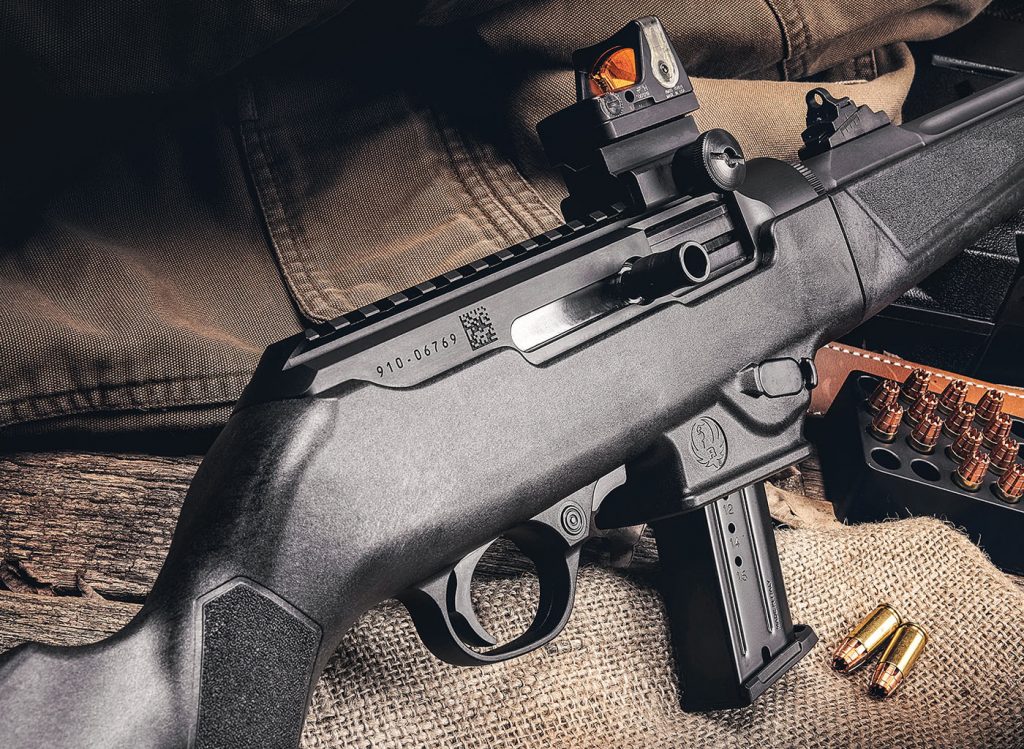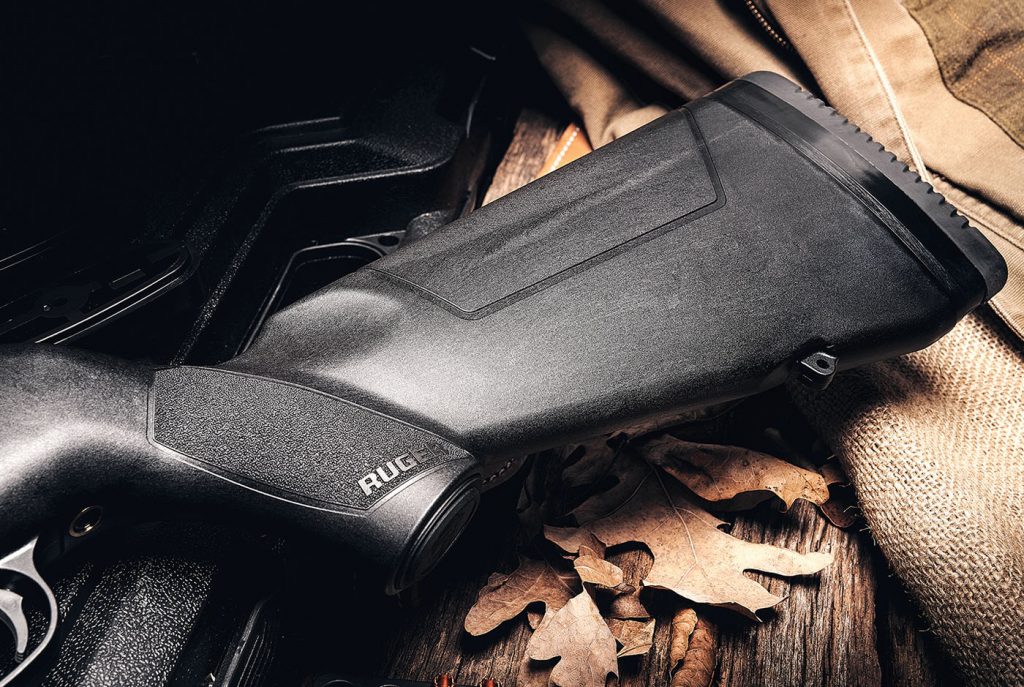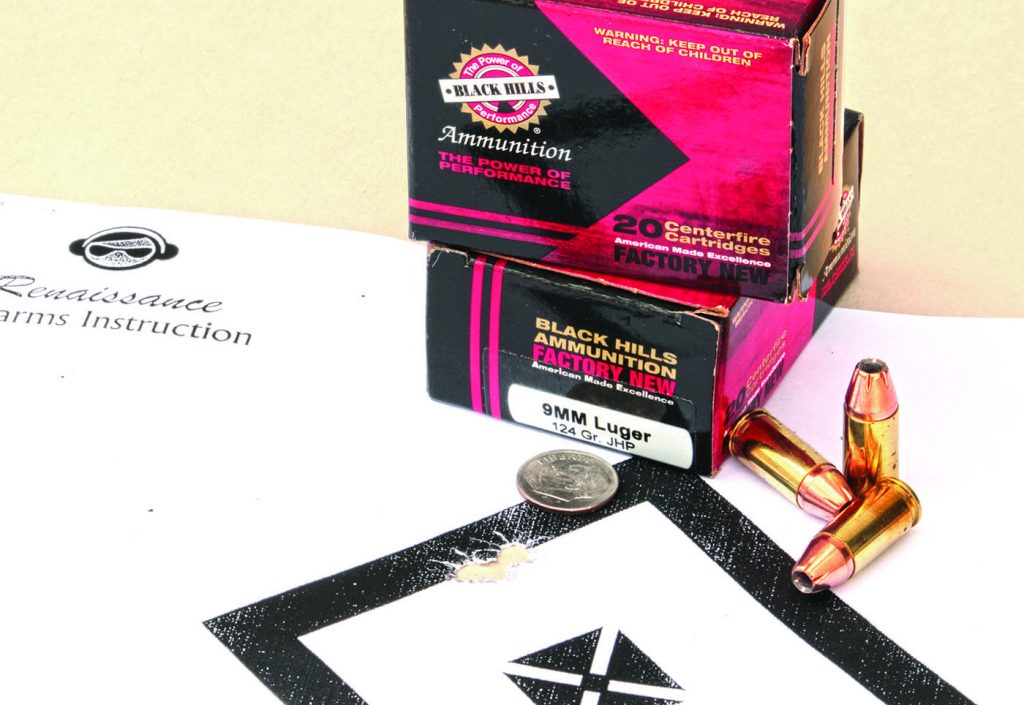Speaking of accessories, the forend is complete with not only a Picatinny rail segment but also a sling stud, allowing you to add accessories with either mounting system. Ruger also designed an integral Picatinny top-rail into the receiver. I’m a big fan of this because the screws that hold bases on are the first to fail in most scenarios. The PC Carbine also abandoned that God awful horseshoe rear sight design that we all cursed on our 10/22s, and replaced it with a fully adjustable ghost ring (thanks for reading our letters fellas) and a standard fixed front sight post.

The trigger uses many 10/22 parts, so it feels exactly as you would imagine. A fair amount of take up ends in a clean break at right around 4 lbs., as confirmed with a Lyman digital trigger pull scale, before resetting with just about a quarter inch of forward travel. Double taps are manageable, and precision is also very obtainable.
Function was a little different than most semi autos. Although the bolt does lock back on an empty magazine, it can’t be released with said empty magazine in place. Also, the bolt stop does not double as a bolt release; you must slingshot the charging handle to chamber the first round off of a fresh magazine. Otherwise closing the action involves removing the magazine. We mounted a Riton Micro Dot sight with a 3x magnifier ( Ritonusa.com $484.00 for the set) for our range test. This configuration gave us a rapid aiming point for speed shooting, and with the flick of the wrist, magnification to reach out to the weapon’s maximum effective range. We planned on trying the new carbine in some USPSA scenarios, as well as some longer range target shooting, so this configuration fit the bill.

9mm ammo is all but swinging from trees these days, so we quickly gathered up rounds from Black Hills, Federal and Wolf Performance Ammunition and hit the range with a variety of cardboard, paper and steel targets.
The magazine and charging handle of the PC Carbine are both ambidextrous, and can be configured in the field without the need for special tools or aftermarket parts. That’s a big selling point for lefties or righties who like to use their support hand to release a bolt, eliminating the need to reach over the receiver.

The major eye opener of this carbine is, however, that not only does it take Ruger SR series and Security-9 mags, but it can take Glock magazines as well. Allowing their new carbine to take Glock magazines now significantly improves their shot at getting picked up by police departments. Doing so by just a drop in sleeve is also genius, because now there is nothing stopping them from making one to take other popular magazines (fingers crossed for M9, Sig Sauer P229 and P230 mags) somewhere down the line. Although super convenient for police, this also makes it very attractive for USPSA shooters who might be running a G34 and the accompanying rig and mag carriers. Taking Glock mags also means taking aftermarket Glock mags, letting the shooter utilize 33 rounders and even 50- or 100-round drum magazines! For our testing we used both an OEM G19 mag and Magpul’s 10-round G19 and G17 magazines.

All ammo fed and fired flawlessly. This included steel-cased Wolf jacketed hollow points and Black Hills Honey Badger ammunition with basically a fan blade as a tip! We did our testing at 50 yards, as this is a typical range for a rifle of this caliber and application. We found good accuracy with all rounds; however Black Hills 124-gr. JHP and Federal 135-gr. Hydra-Shok DEEP performed the best, with an amazing group of just 0.37 inches delivered by the Black Hills load. We had quite a bit of Black Hills 124-grain JHP rounds left over, so we decided to run our full-sized steel IPSC out to 200 yards and see how it grouped. After finding a rough zero we sent three rounds down range that clustered in only a 3.5” group, far exceeding our accuracy expectations for the little carbine with the light bullet and 10-MPH crosswind.
Page 3




















